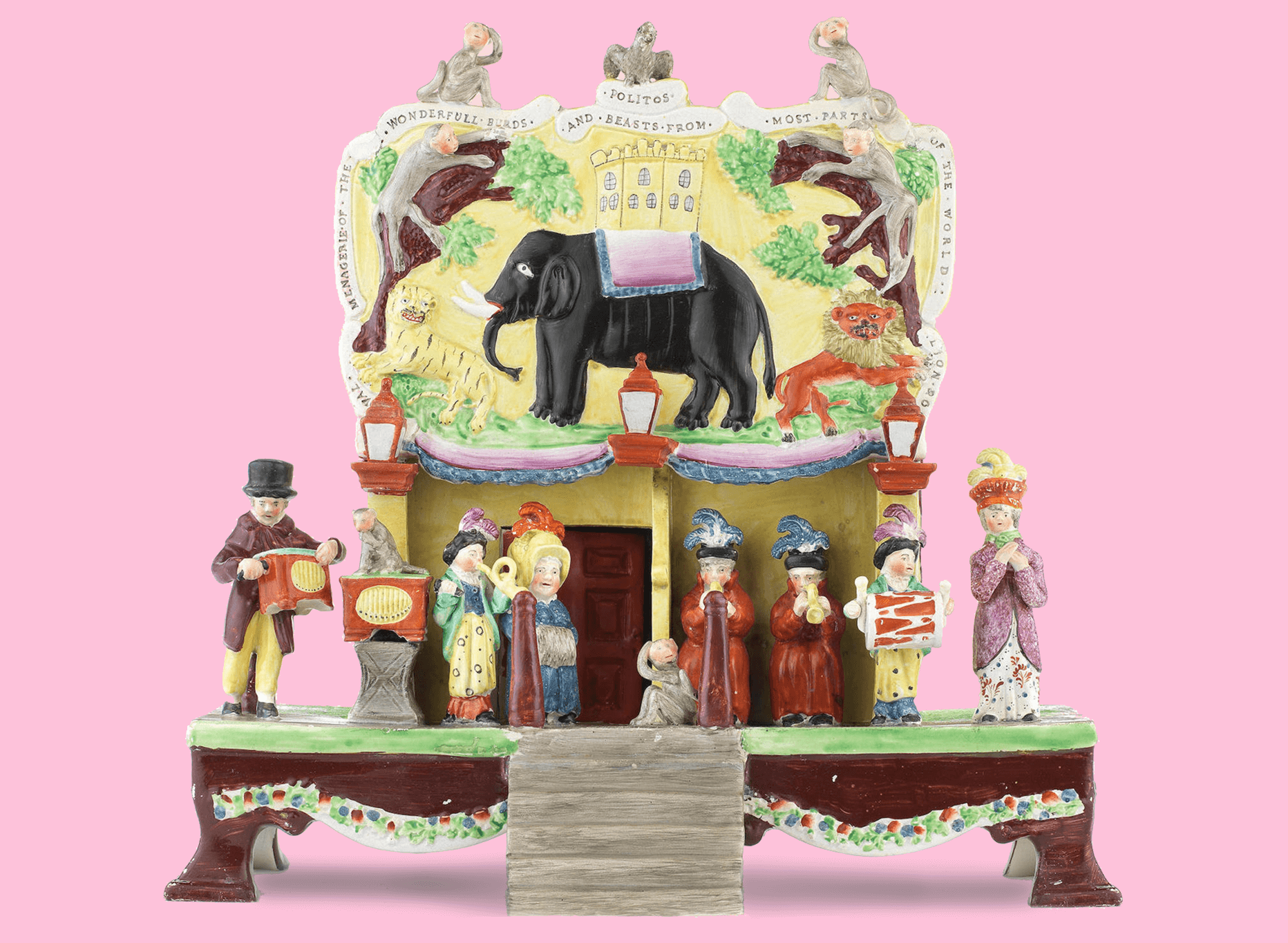Rinaldo and Armida
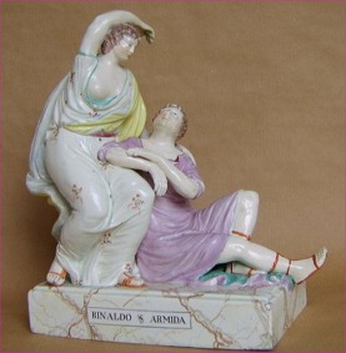
The characters of Rinaldo and Armida are from Torquato Tasso’s poem “La Gerusalemme Liberata” (Jerusalem Delivered) circa 1581. The poem’s tale is one of love and heroism in battle during the First Crusade (1096-1099). The sorceress Armida is sent to kill the knight Rinaldo, but instead falls in love with him and bewitches him. By 1600, the poem had been translated into English, and it was to remain popular in England into the nineteenth century, inspiring music, plays and numerous paintings. Notably in 1711, Handel’s opera “Rinaldo” was London’s first Italian opera.
Acknowledgement: Myrna Schkolne, Staffordshire Figures 1780-1840 Volume 2, page 4

Anthony van Dyck made two paintings of this subject. His 1629 painting and the Derby figure of the late 1770s show Rinaldo with his eyes closed. Coincidentally in 1629 Poussin also painted the subject with a sleeping Rinaldo. These portrayals depict the moment at which vengeful Armida finds Rinaldo asleep, but overwhelmed by his beauty is unable to kill him.
However, in van Dyck’s 1634/5 painting of Rinaldo and Armida, Rinaldo’s eyes are open. The scene painted by Van Dyck shows a tender moment between the couple before Rinaldo’s comrades, who are approaching in the background, disturb their idyll and compel Rinaldo to return to the fight. This earthenware figure also shows Rinaldo’s eyes open, as Armida dangles a laurel crown over his head, although the laurel crown is sadly missing here.
Anthony van Dyck’s 1634/5 painting is now in the collection of the National Gallery, London, where you can read more about the subject and examine a high resolution image of the painting.
More Figures of the month

Rare figure of Victorian card playing
At first glance, this may appear to be an ordinary arbour figure. But upon closer inspection, one can see these three people are engaged in a game of cards.
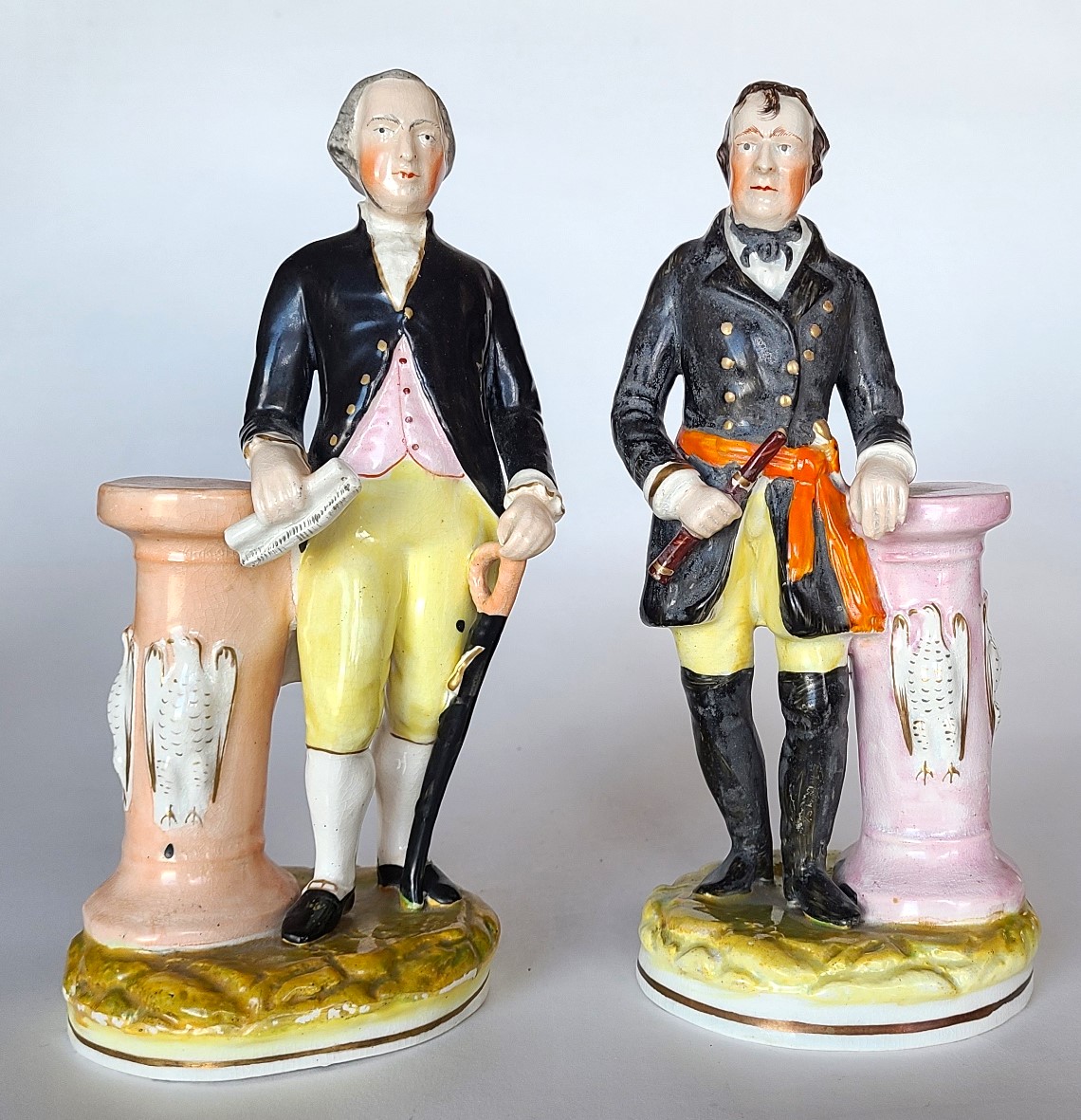
George Washington and Zachary Taylor
This is a very rare pair of figures portraying George Washington and Zachary Taylor. They stand approximately 9” and 9.1″ tall, and date to approximately 1850.
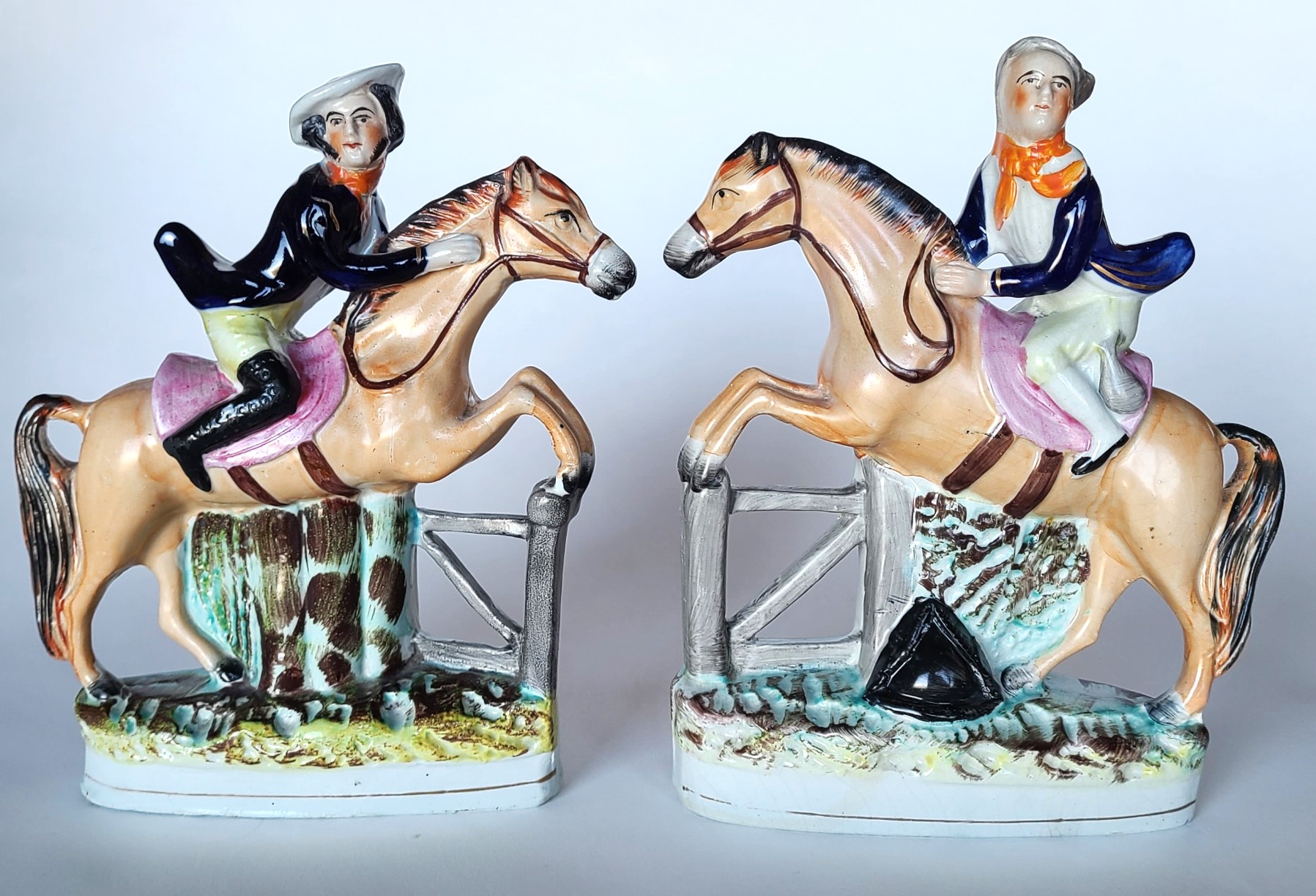
Tam O’Shanter and John Gilpin
This is a very rare pair of figures portraying Tam O’Shanter and John Gilpin. They stand approximately 8.6″ and 9.0″ tall, and date to approximately 1845.
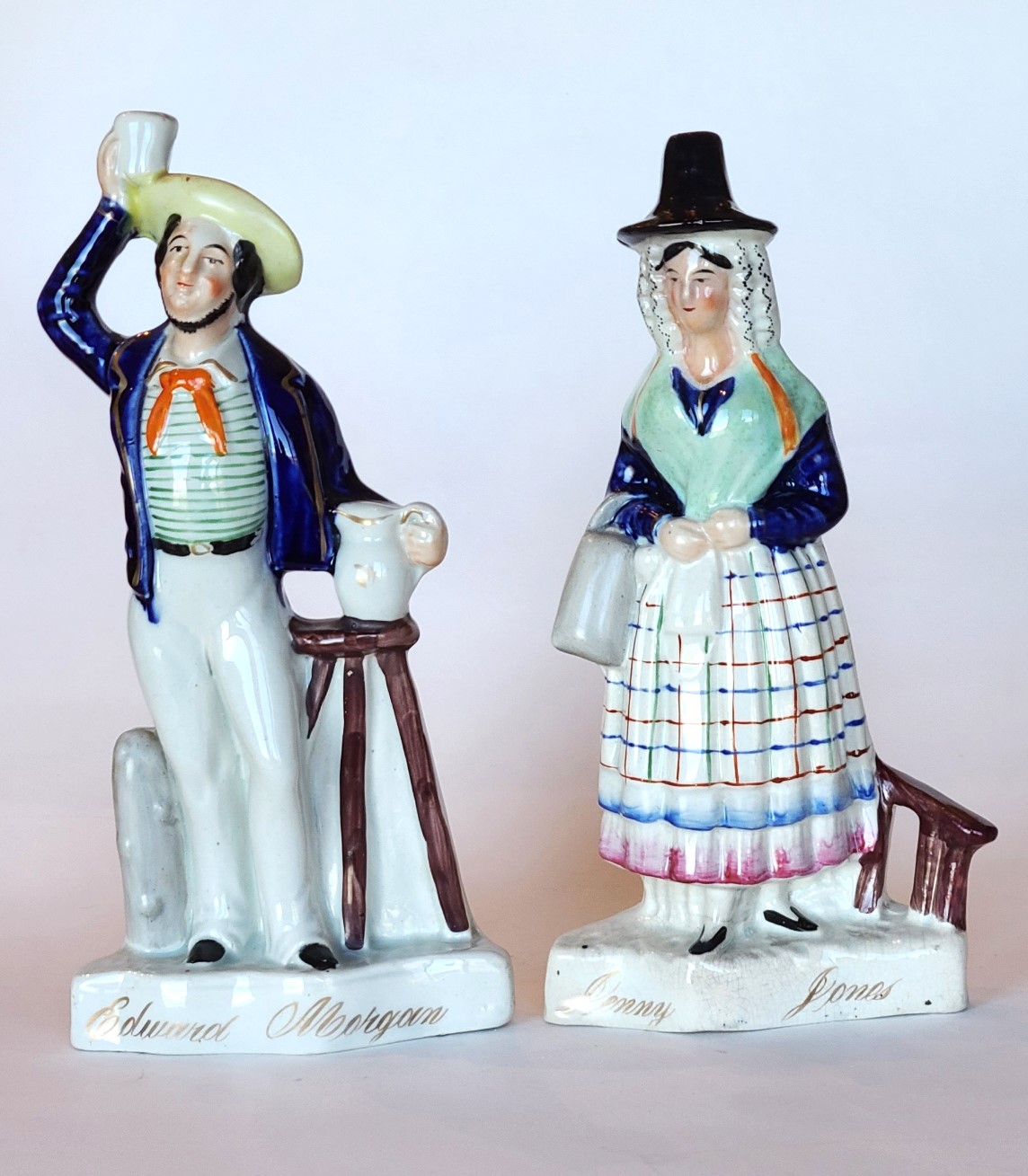
Edward Morgan and Jenny Jones
This is a rare pair of figures portraying Edward Morgan and Jenny Jones, titled with gilt script. The romantic tale of Morgan and Jones was set to music in 1825 by Charles James Mathews.
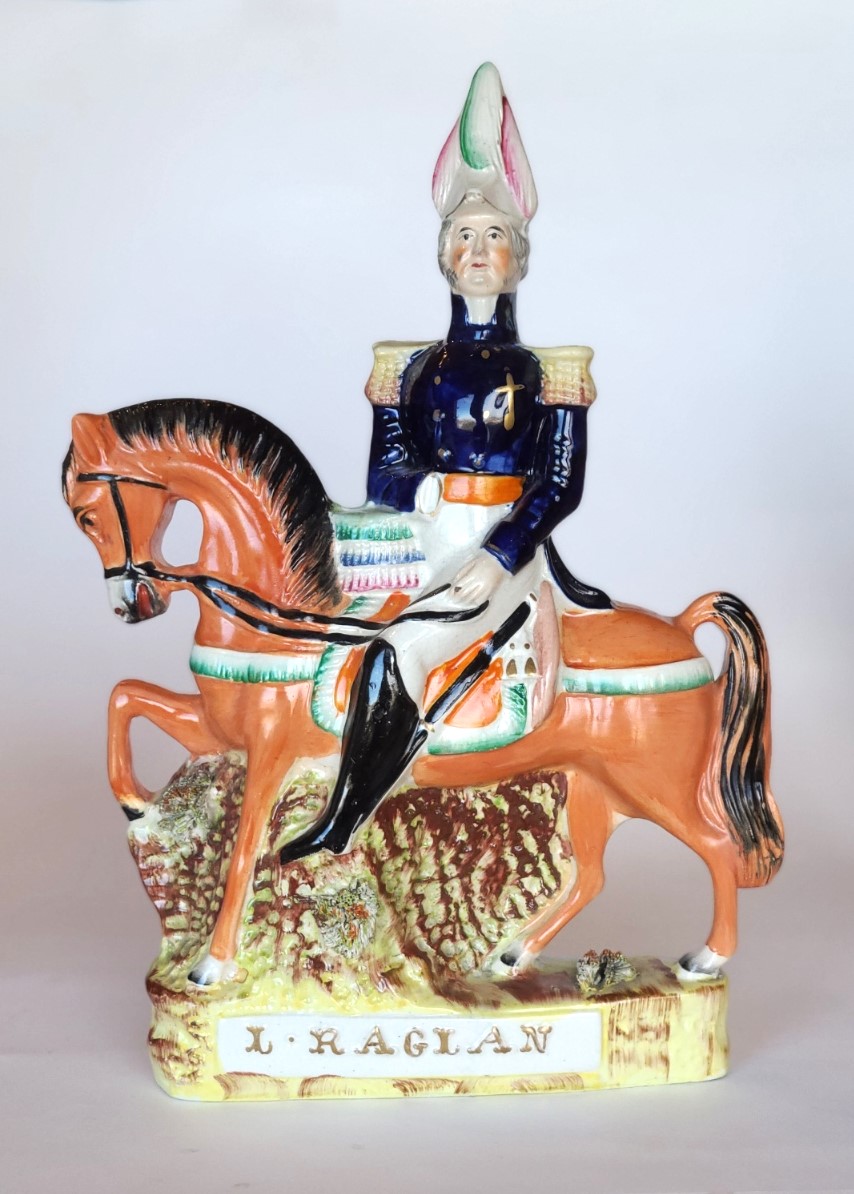
Field Marshal Fitzroy Raglan
This is a rare figure of Field Marshal Fitzroy Raglan. The figure stands about 12 1/4” tall and dates to about 1854.
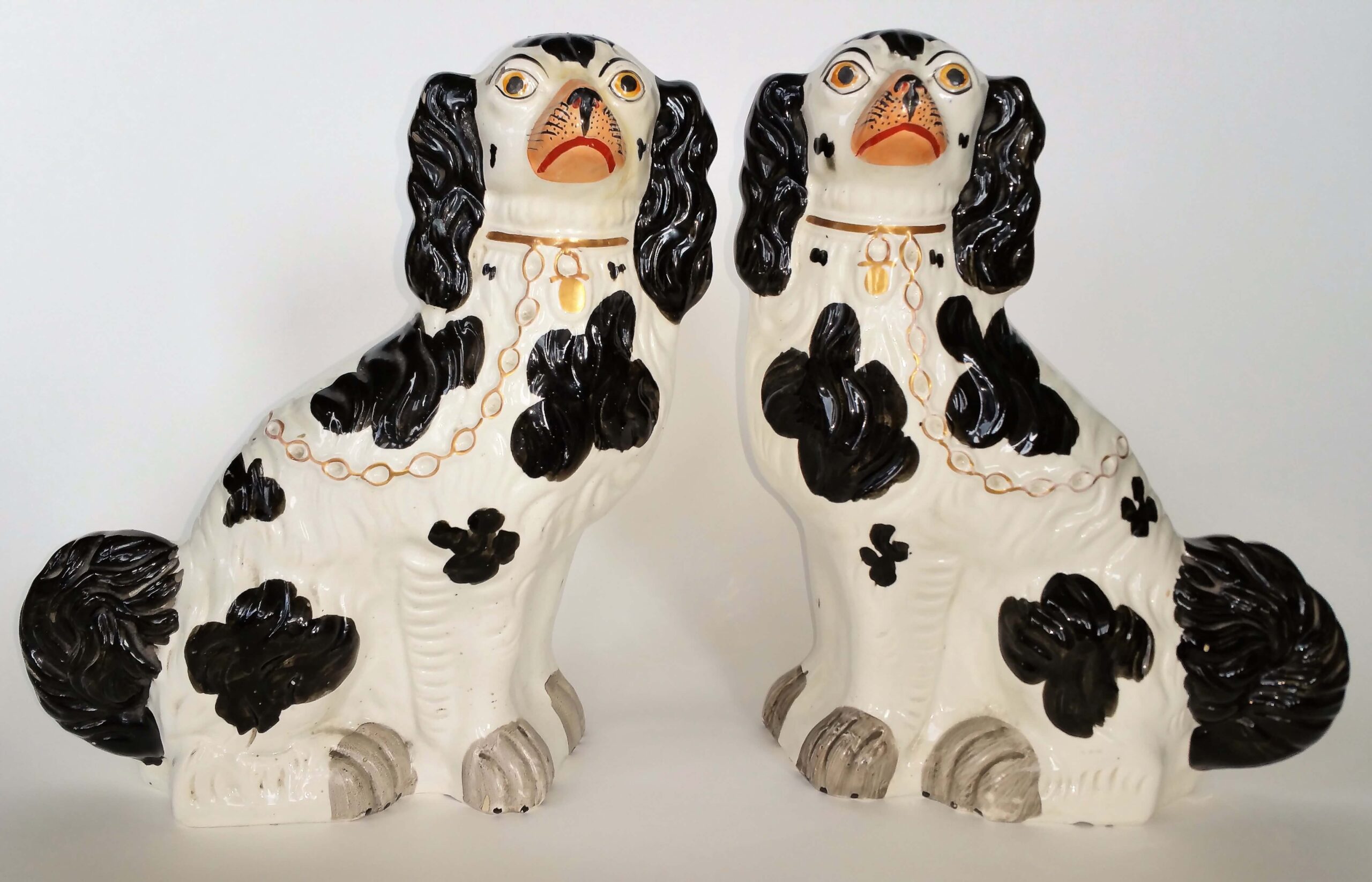
Black and white spaniels
This is fine pair of #1 black and white Staffordshire spaniels. They have a raised number one on the underside, designating them as the largest in a series of six sizes, number six being the smallest.
Membership
We warmly welcome new members – join us for free!
Wherever you are in the world, whether you are an experienced collector, a researcher interested in the folk art of England, or just someone who is intrigued by Staffordshire figures, please join us and get the rest of this year for free! Stay with us next year and pay an annual fee of £45 / $50 per household in January.
